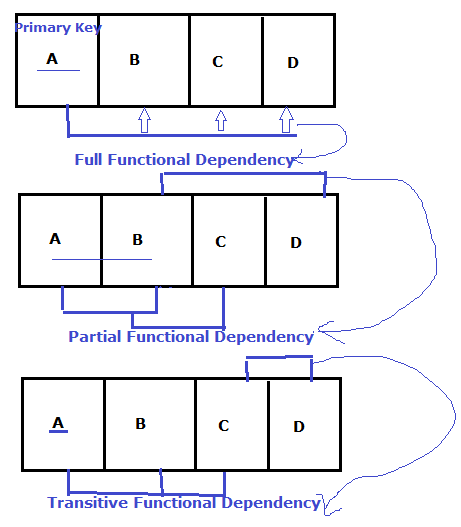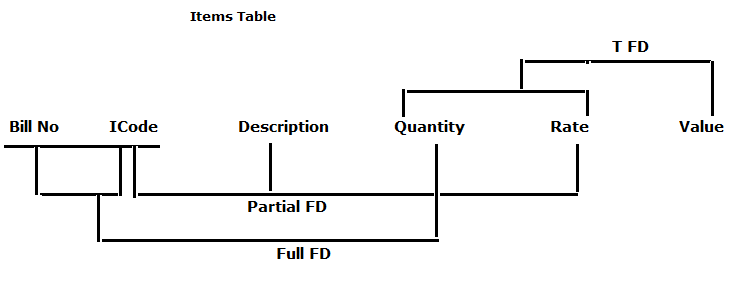SQLServer Normalization:–
Normalization Definition:
- Normalization process of organizing the data in any table and normalization in the process of reducing redundancy in the table.
- Normalization process determines which attributes should be grouped in a table.
- If the table contains redundancy the following problem in this problem are called “anomolies”.
- Insert anamoly
- Update anamoly
- Delete anamoly
- Normalization process is a “set of rules” and each role is called “one normal form”
- There are 6 normal forms:
- [1st normal form] 1NF
- [2nd normal form] 2NF
- [3rd normal form] 3NF
- [Boyce-code normal form] BCNF [Boyce-code]
- [4th normal form] 4NF
- [5th normal form] 5NF
- Normalization [manages] more recommends more tables- less-columns.
- Normalization recommends store data in its own table
Functional Dependency in DBMS with Example :-
- There is a table R (A, B), it attributes B depends on A then there is a functional dependency between AB and denoted as follows A-> B
Types of Functional Dependency in SQL Database :
- Full Functional dependency.
- Partial Functional dependency.
- Transitive Functional dependency.
Full Functional Dependency with Example:
- In a table if non key depends on part of the key then the dependency is called “Full Functional dependency”.
Partial Functional dependency with Example:
- In a table ,if the non key depends on part of the key then the dependency is called “partial Functional dependency”
Transitive Functional dependency with Example:
- In a table, if the non key attributes depends on another non key then it is called “Transitive Functional dependency”
First Normal Form in DBMS with Example:-
A table is said to be in first normal form, If there are no repeating groups in it (or) all attributes are atomic (single).
T1 Table
Billno Bdate Ccode Cname Addr Icode Dept Qty rate Volume THbill
In the above table is not according to about 1NF because some of the attributes are “non-atomic attributes” decompose the table as follows.
Bill Table
- Billno Bdate Ccode Cname Addr Thbill
Item Table
- Billno Icode Dept Qty Rate Value.
Second Normal Form in DBMS with Example: 2NF
A table is said to be in 2Nf,if it is in 1NF and no partial dependencies should exist in that table.
Example:
- In the above table is not according to 2NF then decompose the table as follows.
Bill details: Billno Icode Qty Value
Item :Icode Desc. Rate
Bill
Sellno sdate ccode cname caddr thbill
Items
Icode desc Rate
Bill details:
Billno Icode Qty Value.
Third Normal Form in DBMS with Example:-
Rule:
A table is said to be in 3NF,if it is in 2NF and
1. No transitive dependencies should exists in that table.
2. No derived attributes should exist in that table.
- In the above table is n’t according to 3NF then decomposing the table
CUST:
Ccode Cname Caddr
BILL:
Billno Bdate Ccode
ITEMS:
Icode Descript Rate
BILLDETAILS:
Billno Icode Qty


